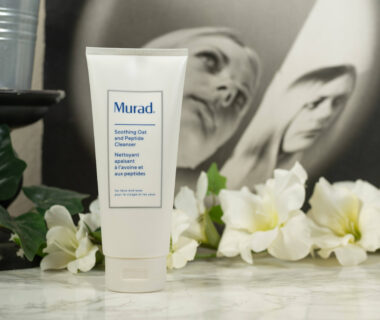ADVERTISEMENT INFO: PRODUCTS MENTIONED IN THIS POST ARE PR (GIFTED) AND LINKS USED ARE AFFILIATE LINKS. I RECEIVED NO MONEY TO WRITE THE BLOGPOST. PLEASE READ DISCLAIMER
Fermented ingredients have been used in Korean Beauty for centuries (and fermentation as means to preserve food is popular in many parts of the world, think Kimchi vs Sauerkraut), but the increased research on the skin microbiome and the attempt to incorporate what we learned into skincare has made people quite interested in what they actually have to offer in terms of benefits.

When I asked, there were a lot of questions you guys had, so I sat down to look through the studies and see if I could come up with the answers.
Here we go: Everything you need to know about the benefits of fermented ingredients in skincare.
What is fermentation?
To understand the process better, let’s first talk about what fermentation actually is. Fermentation is defined as metabolic process where compounds are broken down by microorganisms like yeast or bacteria into their smaller components.
This happens in our gut as we digest stuff, but has also been used as means of food preservation for centuries.
Fermentation is a very broad term though, and different things get broken down to different building blocks depending on what they are originally made of. If you ferment sugar cane for example, you get Glycolic Acid, if you ferment milk, you get lactic acid. If you ferment Red Ginseng though, you don’t get an AHA, but Red Ginseng compounds.
Fermentation is just a way of breaking down larger molecules and on its own won’t tell you if it provides you with something that will be beneficial for your skin.
Are there general benefits most fermented ingredients share?
Let’s look at some of the claims that are made about skincare benefits and see if there is a reason behind them.
“Fermented ingredients balance the skins microbiome”
The explanation given here is that the fermentation process creates probiotics which, when applied to the skin, nourish the good bacteria and hinder the bad bacteria. I have two videos about the skins microbiome and Pre-, Pro- and Postbiotics in skincare that I will link up in the cards, but in short: Yes, probiotics are good for some bacteria, but what a balanced microbiome on the skin actually is and how much of each kind of bacterium each individual needs at their specific point in life is still unclear, and there is much more research needed before we can even attempt any claims here. So this claim gets a:
“Might be true, might be false, don’t bet on it.”
“Fermenting ingredients creates new ingredients”
Well, that is the definition of fermentation. We take one molecule and break it down into it’s building blocks, so new potentially beneficial ingredients are set free. I mentioned before that this is how AHAs were initially created, and we all know that rubbing our face with sugar cane will not give the same effect as applying Glycolic Acid, even though the latter is derived from sugar cane. It has to be set free first – or engineered in the lab.
The ones that come from fermentation most often are Amino Acids, Peptides, phenolic compounds and Flavonoids, but again, depend on the initial molecule to undergo fermentation.
This claims is
“True”
“Fermentation increases the potency of any ingredient”
Now if we remember that fermentation is basically the destruction of the initial molecule, you can answer that one yourself. Fermentation might make many ingredients more potent – sugar cane vs Glycolic Acid – but not any ingredient. If you break Retinoic Acid down into individual Amino Acids, it won’t be Retinoic Acid anymore and I doubt the effect of the Amino Acids will be more potent than the one of the original molecule. (More info: Your comprehensive guide to retinoids)
As it is mostly plant extracts that undergo fermentation though, this claim gets:
“Exaggerated, but in most parts true”.
“Fermentation increases bioavailability of active ingredients”
The explanation given here is that breaking the original molecule down reduces molecular weight and size of the components, meaning they can penetrate the skin deeper, which increases their bioavailability. Again, this is true if the actives are the compounds you get after fermentation – sugar cane has much more bioavailable Glycolic Acid after fermentation than it has before – but not if the active was the molecule before the fermentation process. Think of having a large engine that you want to fit into a small box, if you break it down into its parts, you might be able to store all of them in the box. But then you have individual parts in a box, not an engine anymore.
What studies have found is that after fermentation of some ingredients – green tea, red ginseng, Saccharomyces for example, the concentration of antioxidant components does increase quite a bit. That can’t be extrapolated to all fermented ingredients though, as not that many have actually been studied.
Just like the one before, this claim gets:
“Exaggerated, but mostly true”.
“Fermentation increases hydration in the skin”
If you look at what most ingredients get broken down into, you will understand why that is: Many of the Amino Acids and Peptides that you get afterwards are part of the so-called Natural Moisturizing Factors, responsible for hydration in the skin. (More info: Ingredient Spotlight Hyaluronic Acid)
This claim is:
“True”
Two more things you might hear occasionally but that aren’t as prominent as the ones mentioned before is that fermentation helps the skin barrier because it makes the end product more acidic in pH, partly true because fermentation does often release acids – the German Sauerkraut means translated “Acidic Cabbage”, and that fermentation extracts have anti inflammatory potential, which is again partly true as Saccharomyces, which are often used, have Beta-Glucan as part of their cell wall lining. If they are broken down, Beta-Glucan is released and Beta-Glucan is known to be anti inflammatory. (More info: Ingredient Spotlight Colloidal Oat meal)
Is there data to back up the claims?
After looking at the claims with common sense, let’s take a closer look at the data available. As it is often the case with skincare, studies are few, usually of a small size and more often than not conducted by companies selling the products they study, which doesn’t render them useless, but has an inherent conflict of interest.
The ingredients that have been studied are:
- Galactomyces Extract, which has shown in vitro it might help increase depleted skin barrier proteins – the conclusion “might” is a very weak one and this study was founded by Procter + Gamble, which hold distribution right for Pitera, the main ingredient in SK II
- Saccharomyces Extract, which has shown anti inflammatory effects in vitro, probably due to the previously mentioned Beta-Glucan released from their cell wall lining during fermentation, and could show the same benefits in vivo in a study with small numbers done on Korean women.
- Red Ginseng, whose Red Ginseng compounds have anti-wrinkle effect and in which after fermentation not only the concentration of the Red Ginseng compounds did increase, but in which these compounds were also altered through the process to be more hydrophobic, meaning they did penetrate the skin better.
- Tea Extract (both green and black), in which in vitro the antioxidant potential of the polyphenols was much stronger after fermentation.
Apart from these studies done on individual ingredients though, the main consensus in literature is that we need much more data before we can safely say which benefits fermenting ingredients will offer for the skin.
I will link my references below.
Which skin types will benefit the most from fermented ingredients
Now with all that said, is there a specific skin type that will benefit the most from incorporating fermented ingredients into their skincare regimen? That is hard to say, as I don’t think they have that one distinct advantage over other products you could buy. Any skin type could benefit from antioxidant, anti inflammatory and hydrating properties, so I think the best recommendation here is that it won’t have negative effects for any skin type, so everyone interested could give it a go.
Brands to explore if you want to try fermented ingredients in your skincare
This is by no means an extensive list, just the ones that are the best known for fermentation or the ones that I personally tried and enjoyed.
- SKII is probably the most famous one, with a lovely story about how young and bright the hands of sake brewers looked when compared to their faces. Apparently they discovered their secret ingredient called Pitera was responsible for that and developed a skincare line around it. SKII is pretty expensive, their cult product, the SK II Facial Treatment Essence is 185 $ for 160 ml. Despite Pitera being trademarked, the INCI name is well known – it is Galactomyces Ferment Filtrate.
- That led to many other companies using Galactomyces Ferment Filtrate in their products as well, with presumably the same benefits, but for a lower price. Two examples are the CosRX 95 Galactomyces Toning Essence or the Benton Fermentation Essence. I have tried neither of them, so I can’t compare, but feel the need to point out that SK II uses 90% Galactomyces Ferment Filtrate, which could impact the effects in terms offering a higher concentration – I personally am not willing to see that for myself at an 8 times higher price.
- A firm favorite of mine, the Estee Lauder Advanced Night Repair Synchronized Recovery Complex II (full review here) changed its formula in 2013 to incorporate fermented ingredients, Bifida Ferment Lysate, Yeast Extract and Lactobacillus Ferment Filtrate to be precise. The exact concentration is not disclosed and none of the three have studies on them specifically, but I love it.
- The brand Fresh has a Black Tea range that uses fermented black tea, which apparently boosts antioxidant properties, very well known is the Fresh Kombucha Facial Treatment Essence, but again it isn’t something I have tried myself.
- Two brands I have tried recently that offer Fermented Ingredients are Beauty of Joseon in their Radiance Cleansing Balm (full review here) and several of their serums and essences, and the brand 107 that uses 7 year old vinegar as their hero ingredient and several other dedicated ferment filtrates in their Micro Drizzle Toner (full review here), DEWY GLOW Serum Mist (full review here) and Every Day Plump Hydro Cream (full review here).
- Odile Monod, who has a channel dedicated to K-Beauty skincare, recommends Red Ginseng skincare by the brand Donginbi – again, I have not tried anything from them myself.
Conclusion
I think it is an interesting process, but not as valuable as it once was. Before the many discoveries we made that allowed us to manufacture things like peptides, AHAs or amino acids in the lab, this was a great way to boost the efficacy of your routine. But I also don’t think that there is a difference between the Beta-Glucan made through fermentation of Saccharomyces and the one made by a company through other means. If I want Beta-Glucan, or Glycolic Acid, or a specific Amino Acid, I would most likely go for a product that contains a defined amount of exactly that rather than setting my hopes on fermentation filtrate.
That doesn’t mean I don’t think they can be beneficial – for overall improvement rather than addressing a specific concern they might be great, offering anti inflammatory, antioxidant and hydrating effects – all things anyone would benefit from.
I personally will surely not shell out 185 $ for an essence to get these effects, but if I find a product I love and it has a ferment filtrate as well, that is an added benefit that I will gladly take. My routine will still be built around Tretinoin, Vitamin C and sunscreen – but some fermented skincare to fill the gaps is more than welcome.

Shop the post
Don’t forget to check out the Discount Code Page on top if you want to save some money on your next skincare purchase.
If you want to get a vote in the next Ask Doctor Anne Topic, Ingredient Spotlight or product I review, don’t forget you can head over to my Patreon account to get more involved!
My references
Yu, Y., Dunaway, S., Champer, J., Kim, J., & Alikhan, A. (2020). Changing our microbiome: probiotics in dermatology. The British Journal of Dermatology, 182(1), 39–46. https://doi.org/10.1111/BJD.18088
Takei, K., Mitoma, C., Hashimoto-Hachiya, A., Takahara, M., Tsuji, G., Nakahara, T., & Furue, M. (2015). Galactomyces fermentation filtrate prevents T helper 2-mediated reduction of filaggrin in an aryl hydrocarbon receptor-dependent manner. Clinical and Experimental Dermatology, 40(7), 786–793. https://doi.org/10.1111/ced.12635
Lee, H. S., Kim, M. R., Park, Y., Park, H. J., Chang, U. J., Kim, S. Y., & Suh, H. J. (2012). Fermenting Red Ginseng Enhances Its Safety and Efficacy as a Novel Skin Care Anti-Aging Ingredient: In Vitro and Animal Study. Journal of Medicinal Food, 15(11), 1015. https://doi.org/10.1089/JMF.2012.2187
Jensen, G. S., Carter, S. G., Reeves, S. G., Robinson, L. E., & Benson, K. F. (2015). Anti-inflammatory properties of a dried fermentate in vitro and in vivo. Journal of Medicinal Food, 18(3), 378–384. https://doi.org/10.1089/JMF.2013.0158


